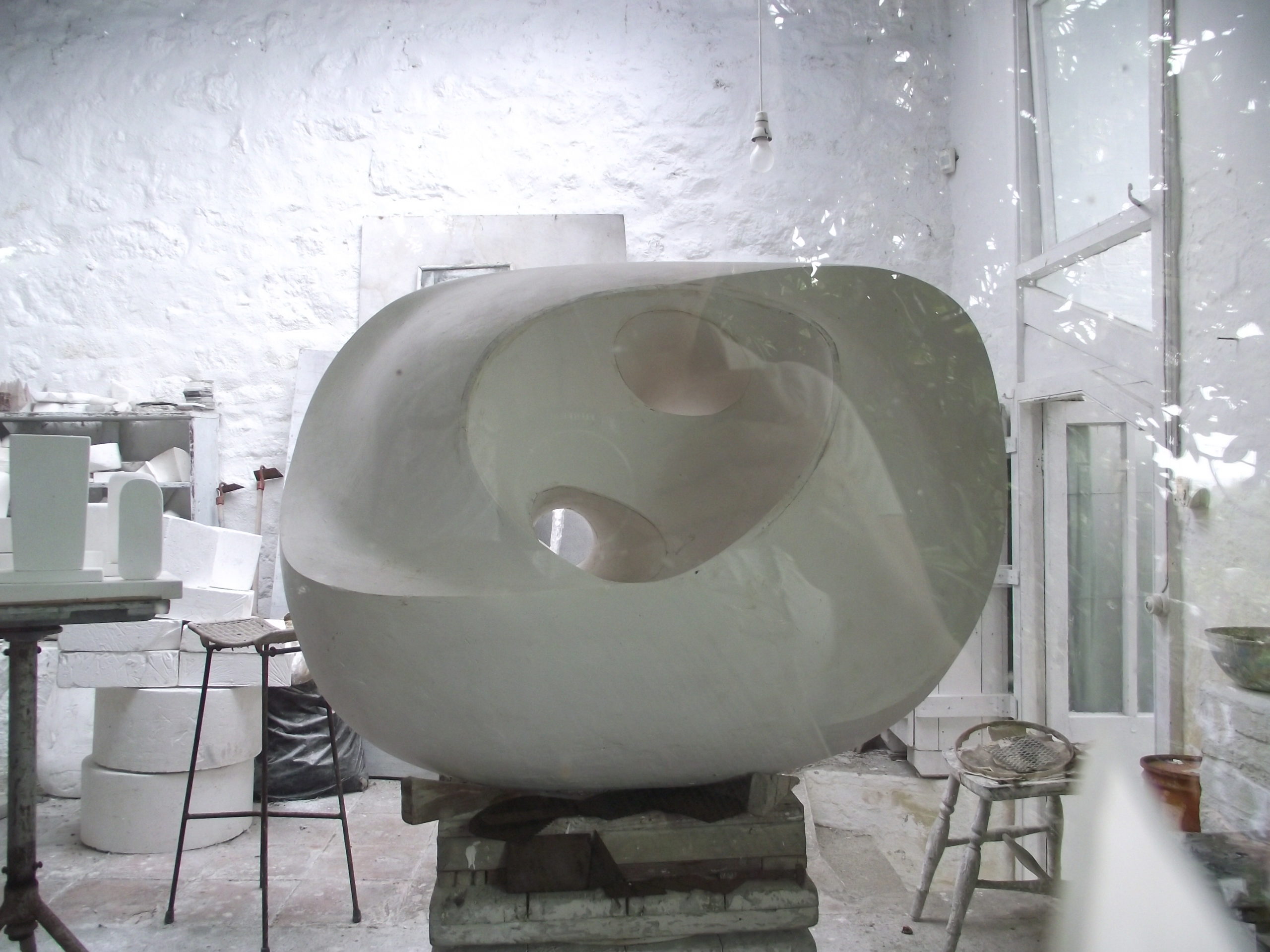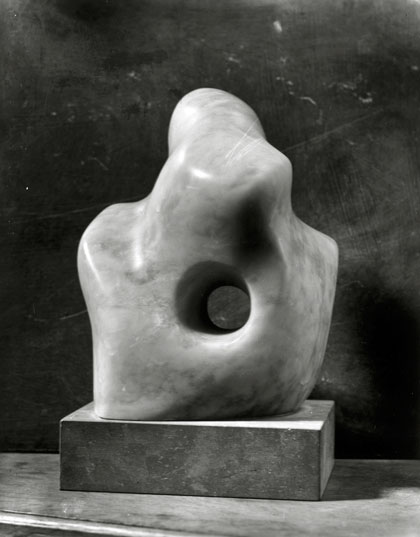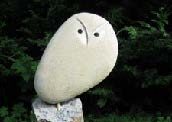
Home » Journal Articles » Thoughts & Opinions » Barbara Hepworth 1903 – 1975
Without a doubt, the foremost woman sculptor of the 20th century, Barbara Hepworth is responsible in part for the emergence and acceptance of Abstract Art.
Even before I started working in stone I was interested in sculpture and was inspired by a book I found in 1988 at our local Library used book sale, titled “Barbara Hepworth, a Pictorial Autobiography,” published by the TATE Gallery, 1970.
The very next summer on a boat trip to Canada I meet a stone sculptor on Salt Spring Island. He was kind enough to give me my first two pieces of stone to carve, which resulted in thirty plus years of discovery and joy as an artist.
Six years ago on a trip to the UK with my husband Mike, we traveled to see her Museum and studio in St. Ives, near Lands End in Cornwall. It was a most moving and profound experience for me walking in her sculpture garden and seeing her working studio with all her tools just as she left them to stop for a tea break. While she dozed off for a short nap, the hotplate warming the tea water started a smoky fire which resulted in her death from smoke inhalation, May 20, 1975. She was seventy-two years old. A very great loss to the art world.
Born in 1903 in Wakefield, UK, she was a budding artist at a very young age.
At 17 seventeen she was accepted as a scholarship student at the Leeds School of Art.
Henry Moore was a fellow student. At nineteen she received a traveling scholarship
to go to Italy and study. There she meets many of the young leading names in the new movement of Abstract Art: Arp, Picasso, Brancusi and John Skeaping, whom she married at age twenty-four. Their son Paul was born two years later. Together they held several shows in both Europe and England which brought them public notice as artists of note. In 1931 she meet Ben Nicholson and in 1934 she gave birth to triplets, Simon, Rachel and Sarah. In 1938 they married. Because of the oncoming of WW2 they moved from their studios near London to the small town of St. Ives in Cornwall, where they both contributed to the war effort. 
 Hepworth was a very prolific sculptor, and produced over six hundred works of art over her lifetime, including many works of public art in England and across Europe. Most notable was “SINGLE FORM” installed in the courtyard of the United Nations in New York on June 11,1964 in honor of Dag Hammarskjold, the UN’s first president.
Hepworth was a very prolific sculptor, and produced over six hundred works of art over her lifetime, including many works of public art in England and across Europe. Most notable was “SINGLE FORM” installed in the courtyard of the United Nations in New York on June 11,1964 in honor of Dag Hammarskjold, the UN’s first president.
She is also noted for many of her sculptures being pierced (with a hole.) In 1931 she sculpted “PIERCED FORM.” She said “the hole connects one side to the other, making it immediately more three-dimensional.” (Henry Moore’s first sculpture with a hole was carved in 1932.)
Three years ago, on a second trip to the UK, Mike’s son James organized a trip for us to go to the city of Wakefield, her place of birth just south of the Scottish border, to visit the Hepworth-Wakefield Museum. On display is a large collection of both finished work and rediscovered working models for her bronze sculptures. A short drive away is the beautiful five-hundred acre Yorkshire Sculpture Park with her multi-figure “FAMILY OF MAN,” along with pieces by Henry Moore and Andy Goldsworthy.

I recommend this trip if you are traveling in that part of the country.







We need some kind of descriptive text here.